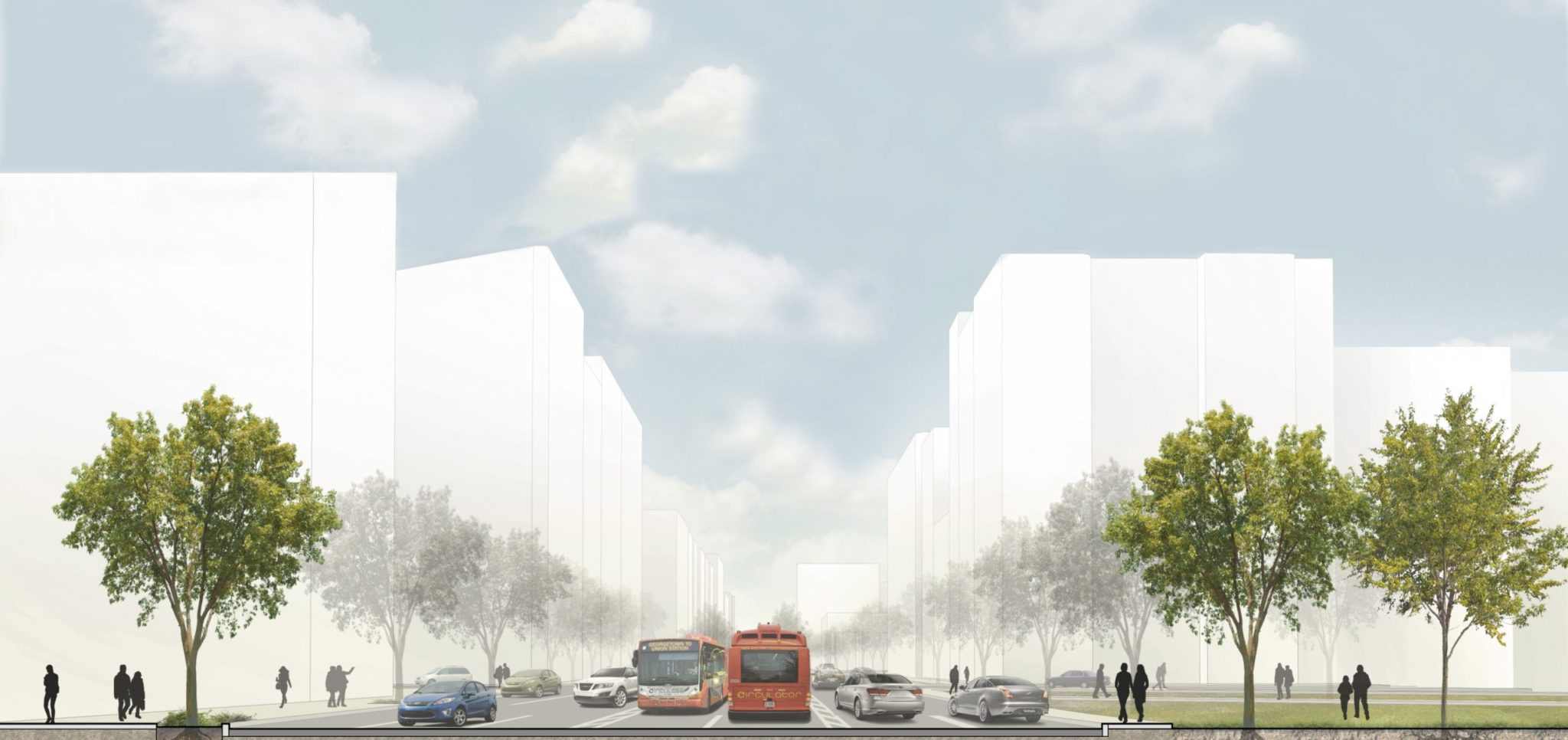As long as there has been traffic in Washington, there have been dreams of new ways to deliver us from it. In recent years, innovations have ranged from electric scooters to Elon Musk’s proposed high-tech tube that could shoot commuters to Baltimore in 15 minutes.
Now comes word that District transportation officials are moving forward with another concept—an exciting idea that promises to whisk us from one side of downtown to the other. It brings together such futuristic tools as signs, paint, and parking tickets. It’s called a bus lane.
Not exactly a subterranean rocket, but unlike Musk’s famous initiative, you’ll actually see it in action this summer if you’re on H or I Street downtown. During a three-month trial, DC has closed lanes of traffic to private drivers. Designated by red paint, the lanes are for buses and also open to bikes and some taxis.
There were still some kinks when, on the second day of the trial, I headed downtown during the morning rush hour to see how the lanes were working. On I Street, buses chugged unencumbered as regular traffic crawled beside them. But H Street was another story: The bus lane was blocked by an idling delivery truck, a taxi, and four tour buses. More enforcement definitely seemed in order.
Those issues could be solved by a more dramatic—and permanent—rethinking of one of the District’s most maligned thoroughfares: K Street. Instead of the current setup, in which a long stretch is gunked up with cumbersome “service roads” on each side, the roadway will be reconfigured with sealed-off lanes for buses in the center. No matter how jammed the car paths get during rush hour, buses—once the pokiest form of transit—will have a clear route. The project, which was announced 15 years ago but only recently got the official go-ahead from the Bowser administration, is expected to cost more than $120 million.
The bus was once Washington’s preferred mode of transport. For much of the 1960s and ’70s, if you wanted to get around town quickly, you took a bus. The last streetcar stopped running in 1962, and in its place a network of bus-only lanes proliferated on heavily used routes including Connecticut Avenue in DC, Wilson Boulevard in Virginia, and Georgia Avenue in Maryland.
Then came Metro. After the gleaming subway opened in 1976, bus lanes were gradually phased out and replaced with more space for cars.
In recent years, buses have been getting less popular. Overall ridership has fallen, from 188 million annual rides less than a decade ago to about 163 million today. No wonder: Buses in Washington travel 9 percent more slowly than they did in 2012, due in part to congestion and lack of enforcement of all those Ubers and delivery trucks blocking curb lanes.
Moving commuters around efficiently is vital to the area’s economic health, but the reality is that most options for improvement have flaws. The streetcar on H Street, Northeast, was expensive and controversial. (The K Street bus transitway was originally envisioned as a streetcar, but that plan isn’t moving forward.)
Metro expansions, meanwhile, are cost-prohibitive. Metro’s new Silver Line extension to Dulles Airport will cost $5.8 billion. Compare that with the bus lanes Virginia recently built between Pentagon City and Braddock Road—for about $42 million. Viewed in this context, finding ways to speed up buses makes a lot more sense.
To accomplish that goal, the region’s bus-service providers have teamed up for a program called the Bus Transformation Project. This past spring, the group released a set of recommendations that include an app that can be used to pay fares and technology syncing traffic lights to buses. Also key: “prioritizing buses on major roads.” In other words, bus lanes.
Sounds good, right? Sure—so long as you don’t need to drive home on K Street at rush hour. Either the road has to get wider—hard to pull off in the middle of a big city—or car lanes have to be eliminated. The folks who will be plodding home from downtown even more slowly than they do now might not be mollified by a lecture on the (indisputable) fact that buses are more efficient people-movers than cars.
For the rest of us, though, old-fashioned buses might soon become more attractive, especially if these upcoming projects are successful. Soon you might find yourself waving to those car commuters from the window of a shiny red Metrobus as you fly past them on your way to work.
This article appears in the July 2019 issue of Washingtonian.



















